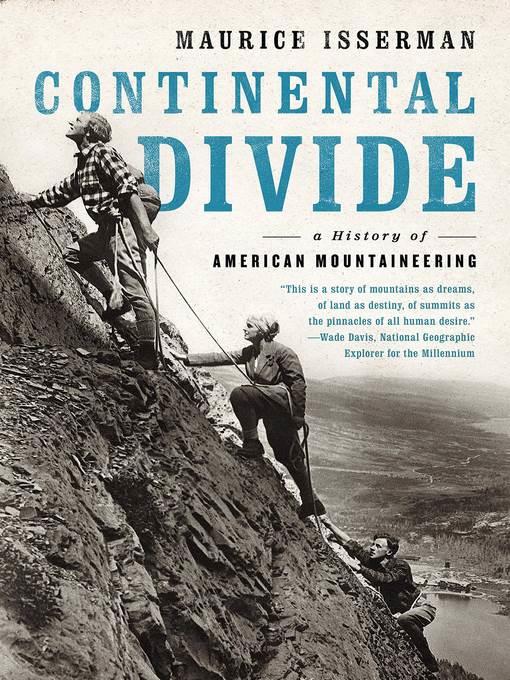
Continental Divide
A History of American Mountaineering
کتاب های مرتبط
- اطلاعات
- نقد و بررسی
- دیدگاه کاربران
نقد و بررسی

February 15, 2016
In this book “about American history, as seen through the prism of mountaineering,” Isserman starts with the Pilgrims in 1642; he then climbs his way through the years to 1963, which he calls “perhaps, the greatest year in the history of American climbing,” because of the groundbreaking routes being ascended in Yosemite and James Whittaker becoming the first American to summit Everest. There are tales of explorers such as Lewis and Clark; mountain men such as John Colter and Jedediah Smith; renowned nature-lovers Emerson, Thoreau, and Muir; and climbers Yvon Chouinard and Royal Robbins. Isserman brings these diverse stories together in a cohesive narrative with a strong combination of in-depth research and welcoming prose that even a climbing novice can understand. Though Isserman glosses over issues of the last 50 years (competitive climbing, sponsorships, ethics, the sport’s fragmentation), his passionate scholarship turns this specialized sporting history into an easily accessible account of the exploration, subjugation, conservation, and appreciation of the great peaks of the U.S. and the world.

Starred review from May 15, 2016
Isserman (history, Hamilton Coll.; coauthor, Fallen Giants) brings masterly storytelling and an eye for detail to the history of American mountaineering, beginning with the colonialists' first encounters with mountains in the 17th century and ending with the golden age of climbing in the mid-1960s. Chapters are all-encompassing narratives of prominent climbers and first ascents, allowing Isserman to pinpoint the emergence of modern mountain climbing, notably the Belknap-Cutler expedition in July 1784 on New Hampshire's Mount Washington. Additionally, the author traces the geologic history of America's mountain ranges and considers the changing nature of climbing, including the construction of hiking trails, the introduction of the sport's gear, and the expansion of adventuring beyond East Coast enclaves. Isserman's deft use of resources, archives, and firsthand accounts make this a wonderful gem of a work that readers can mine for inspiration. VERDICT This broad sweep of American mountaineering history will satisfy general history readers and outdoor adventurers alike.--Margaret Atwater-Singer, Univ. of Evansville Lib., IN
Copyright 2016 Library Journal, LLC Used with permission.

February 1, 2016
This doesn't pretend to be a comprehensive history of American mountaineering. Although it starts in 1642, when Darby Field made the first recorded ascent of an American mountain, it ends in the mid-1960s, when climbing became, in the author's words, a mass participation sport in the U.S. In fact, the book is really about American history, as seen through the prism of mountaineering. Hence the title: not just a phrase used to denote the series of mountain ranges that break the North American continent into two sections (one where the rivers drain into the Pacific Ocean, the other where the water leads to the Atlantic), but also a phrase that calls up memories of Lewis and Clark, of American exploration, of conquering seemingly insurmountable odds in the creation of a nation. Isserman, the author of Fallen Giants (2008), about the history of mountaineering in the Himalayas, brings the same wide-ranging insight and engaging prose style to this follow-up. The result is an account both educational and, perhaps surprisingly, thrilling.(Reprinted with permission of Booklist, copyright 2016, American Library Association.)

























دیدگاه کاربران